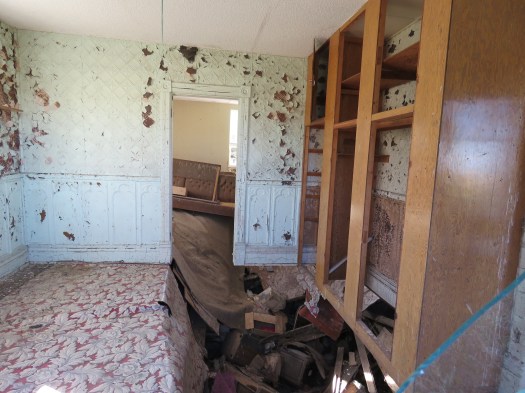Story written by Paul Hamby

During the 1800’s many farmers dreamed of a milking machine to ease the chore of hand milking. Dairy farmers were beginning to milk more cows in larger herds. By the year 1900, hundreds of patents had been granted for milking machines. But none of them proved to be worthy on the farm.
In the fall of 1922, Herbert McCornack invented the Surge Bucket Milker. He used a large roasting pan from his family kitchen as the base to design his new milking machine. This revolutionary milker would hang under the cow suspended on a steel spring rod that was attached to a leather surcingle strap over the cows back. The new Surge Milker used the proven Pine Tree pulsator.
Herbert McCornack also invented the Sharples Cream Separator, a can washer, and many other useful items. He was awarded at least 50 United States patents.
The new milker had a natural surging action as the milker moved back and forward while milking. Thus its name – The Surge Milker. This tug-and-pull movement was similar to the tugging and pulling of a calf. Fred Babson began testing a prototype on his Guernsey dairy cows at Four Pine Farm located near Hinsdale Illinois.
“Four Pine Farm is the real home of the Surge Milker. Here, the machine was developed and used for a long period before even one unit was sold; here extensive experimental work is carried on constantly. No change is ever made without a thorough tryout on the cows”– “Used on the Best” a 1930 Babson sales booklet
The new milker surpassed all their expectations. The biggest advantage was the ability to easily clean and sanitize the Surge. No long milk tubing to try and keep sanitary. “Only 4 pieces of rubber to wash” “Only 4 inches from the teat to the pail”
“Occasionally the teat cups come off the teats; the engine stops, or the cow jumps or for some reason they come off. On an ordinary machine they land on the floor and time must be taken to wash them before milking can proceed. On the Surge, they simply swing down against the pail, away from the floor, out of the dirt. On the usual type of machine if the cups fall to the floor with the pump running they suck up filth and spoil the milk in the pail – this may happen once a day or once a month. On the Surge it never happens at all because the Surge cup automatically shuts off the instant it drops from the teat.” – from 1924 sales book on the Surge Milker
Another advantage of The Surge Milker was better milking. This was due to short pulsation tubes and good vacuum to the teat ends. The teats are only a few inches from the stable vacuum supply inside the bucket.
In 1923 the Surge Bucket Milker was offered For Sale to dairy farms in North America. One of the problems with prior milking machines was that the farmers were unable to easily maintain them. Babson Brothers made a pledge that anyone who bought a Surge Milker would have a dealer visit their farm at least once a year for parts and service. Babson Brothers maintained 10 locations in the US and Canada by 1930 to support the growing dealer network. They offered a 3 year warranty and guaranteed that every part of the Surge Milker was absolutely rustproof. This commitment to keep the units running in top condition along with a quality product contributed to the success of the Surge Bucket Milker.
Farmers were delighted to find that they were getting more milk from their cows with the Surge Bucket Milker.
“I would install a new Surge Bucket Milker system and stay for the first milking that night. The farmer would set out say 10 cans that he usually filled in the evening milking. Many times the farmers had to get another can to hold the extra milk harvested by the Surge Bucket Milker.” – quoted from a retired Midwest Surge dealer.
“We made an actual gain on the thirty head of cows in the first week, changing over to the machines, of 18.9 lbs of butterfat. This at 57 cents a pound, the price we received at the creamery last month, is $10.74 …Louis tells me the separator contains not half so much dirt when he has to wash it…I’ll have to take my hat off to you” – W.F. Schilling, Northfield, Minnesota – March 22, 1929
The farmer increased his income by harvesting more milk and not having to dump contaminated or dirty milk from the claws falling off and sucking up dirt. This put more money in the pocket of Surge Milker users.
“The Surge Milker was built to meet what really amounted to an emergency. Milk inspectors were condemning mechanical milkers; dairymen were going back to the expense and annoyance of hand milking. In so many cases, it was difficult under ordinary farm conditions, to produce clean milk with a machine – entirely possible but not practical. All machines were too complicated to be cleaned properly in the time at the disposal of the average farmer. We were in the milking machine business and we wanted to continue, so we set out to build a machine that would be so simple and easy to clean that there would be no temptation to slight the job – that would settle once and for all the problem of producing milk of a low bacteria count with a milking machine. The Surge Milker is the answer! The fact that we were able to develop a machine that does an obviously better job of milking was a happenstance but that doesn’t decrease its importance; the important thing is the proved fact that the Surge does milk cows quicker and better – and with a degree of safety never before approached.
The Surge is no longer new. In three years,<1923 to1926>its use has spread from Maine to Hawaii – from central Canada to the Rio Grande and a high percentage of its most enthusiastic users are men who have failed with other machines. So far as we are concerned, the emergency no longer exists – the Surge has solved the problem. Pine Tree Milking Machine Company (1926)
The first Surge Buckets were marketed under the name The Surge Milker – Pine Tree Milking Machine Company. Around 1930, the Pine Tree name was dropped and the buckets were labeled The Surge Milker – Babson Bros Co Chicago. This labeling continued for the next 70 years. Check out the variety of logos by clicking Surge Logos.
Mellote Introduced The Surge Milker to Europe in the 1930s.
Dear Sirs (Ozark Electric Coop). . .We have had a Surge milker about eighteen months, but we ran it with an engine. Last month we got a motor so we could use electricity. We are very pleased as our bill is not one-half as much as the gas and oil had been per month. Yours for more electricity. Irvin H. Cook, Republic, Mo. ~1940
 By 1940, The Surge Bucket Milker had 40% of US market share. By 1950 just over 50% of the US market and by 1955 – 76% of the US market. 1955 is also the year the patent ran out and soon everyone was trying to make a look-a-like pail including Sears, David Bradley, FarmMaster, Montgomery Wards, DeLaval, Universal, and Conde.
By 1940, The Surge Bucket Milker had 40% of US market share. By 1950 just over 50% of the US market and by 1955 – 76% of the US market. 1955 is also the year the patent ran out and soon everyone was trying to make a look-a-like pail including Sears, David Bradley, FarmMaster, Montgomery Wards, DeLaval, Universal, and Conde.
The Surge Milker was originally made of Monel Metal, an alloy of 67% nickel, 28% copper, and small amounts of other metals such as steel, iron or aluminum. This metal held up well to the harsh cleaning solutions and protected the flavor of the milk better than other metals of the time. It was also offered in a very rare pure Nickel model. The pure Nickel model was marketed to farms producing milk for babies and hospitals.
Starting in April 1936 Surge buckets were manufactured from 18/8 “Republic Enduro Stainless Steel“. Stainless steel was a new metal alloy. This food grade alloy is commonly called 18/8 referring to the chrome and nickel content. It is also referred to as type 304. 18/8 stainless steel is made of chromium (18%), nickel (8%) and steel (74%). Stainless steel resists acids and alkaline cleaning chemicals and can be polished to a “Looking Glass Finish” that is very sanitary. The Surge buckets were made in 2 pieces and silver soldered together. This type of stainless steel Surge bucket was produced until the 1950’s. During the Second World War, the handles were made from carbon steel that was strapped on. This was due to a shortage of Chromium – making stainless steel hard to get. Babson Brothers offered to put a stainless steel handle on those war time buckets (at no charge to the farmer) after the war. They also produced some plastic Surge buckets during World War II. These were not sold for farm use, just to be used by dealers as salesmen demos and farm show displays. Plastic technology in the 1940’s was not advanced enough for a durable plastic Surge Bucket Milker. If you find one of these plastic buckets, they are rare.
Surge had aggressive and creative advertising campaigns. Surge literature and ads are quite collectable. In the 1940’s Frank Hendron joined Babson Brothers marketing department. He drew the Johnny Surge cartoons, electric fencer cartoons, put out a regular newsletter to customers and produced many of the magazine ads. Frank left the Kansas City Star newspaper where he had worked beside Walt Disney, just before coming to Babson Brothers. You can see a resemblance in Disney’s early cartoon drawings and Frank’s Surge cartoons.
The one millionth Surge Milker was manufactured in the 1950’s. It was gold plated and is on display at the WestfaliaSurge North American headquarters in Naperville Illinois.
In the 1950’s Babson Bros Co introduced an all new Surge Milker. It featured a seamless stainless steel bucket. The technology for this type of welding was developed in Belgium. Once the process was perfected, the Babson factory in Chicago adopted it and started making Grade A seamless buckets in 3 sizes. They also improved the lid at this time with slanted milk inlets to reduce the chance of getting milk back into the pulsator. “The new lid angle provides better distribution of Tug & Pull on each quarter of the  udder.” More than a dozen lid modifications were made over the 80 years of production. All lids take the same lid gasket. The pulsator was also improved in the 1950’s. The block was changed for a different type of mount on the new lid and the new block was easier to clean during overhauls. “A new wider pulsator cover resists dripping and splashing water.” The new style pulsators were manufactured from the mid 1950’s until 1999. New style pulsators serial numbers start with a “C”. Old style pulsators were manufactured from about 1916 until about 1960. Their serial numbers start with the letter “S”. Most repair parts interchange from the 1st Pine Tree pulsators to the last Surge pulsators built 80 years later.
udder.” More than a dozen lid modifications were made over the 80 years of production. All lids take the same lid gasket. The pulsator was also improved in the 1950’s. The block was changed for a different type of mount on the new lid and the new block was easier to clean during overhauls. “A new wider pulsator cover resists dripping and splashing water.” The new style pulsators were manufactured from the mid 1950’s until 1999. New style pulsators serial numbers start with a “C”. Old style pulsators were manufactured from about 1916 until about 1960. Their serial numbers start with the letter “S”. Most repair parts interchange from the 1st Pine Tree pulsators to the last Surge pulsators built 80 years later.
The Surge Milker could be “completely taken apart and all parts cleaned with a brush in 5 minutes” This advantage plus an aggressive advertising campaign took The Surge Milker to number 1 in sales in North America. In the 1960’s, pipeline milking systems replaced bucket milkers as the preferred way to milk cows in North America. Pipeline milkers require much less labor and are easier on the humans doing the milking. Pipeline systems were developed in the 1950’s and 1960’s. Thousands of Pipeline milking systems were installed in the 1960’s and 1970’s as farmer’s herds were getting larger. The trend of fewer dairy farms milking more cows continues today.
Sales of the Surge Bucket Milker declined from 1975 to 1999. Production ended in 1999. Thousands of Surge bucket milkers are still in use today. Many are on small hobby farms or homesteads where they milk a family cow or a few dairy goats for their home use. Some are still used on smaller commercial dairy farms to milk all their cows and others are just used to milk fresh cows or treated cows on commercial dairy farms. In 1999, Westfalia’s parent company purchased Babson Brothers Company and merged the two brands for a new worldwide dairy equipment company – GEA Farm Technologies .















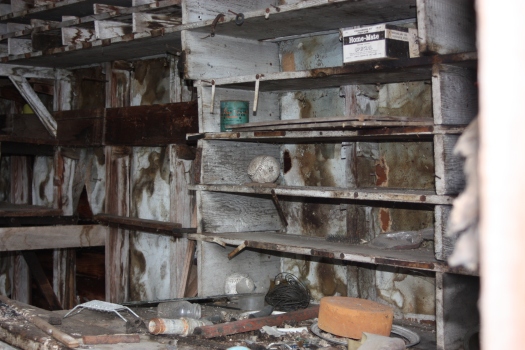

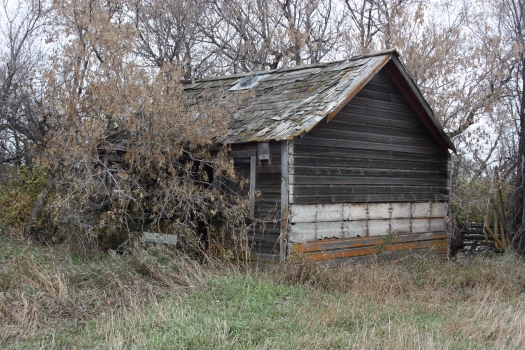
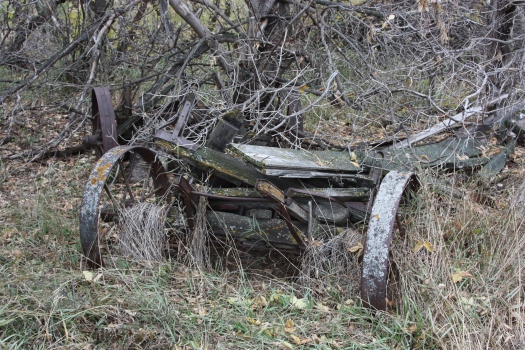
















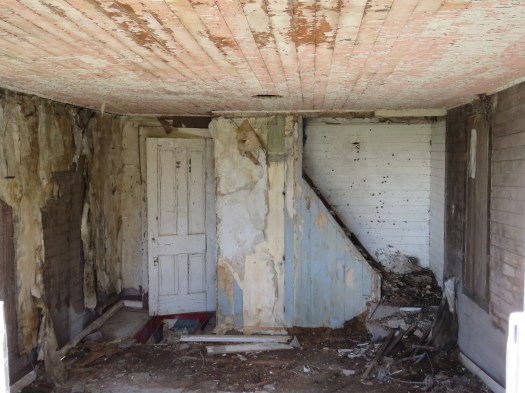






 By 1940, The Surge Bucket Milker had 40% of US market share. By 1950 just over 50% of the US market and by 1955 – 76% of the US market. 1955 is also the year the patent ran out and soon everyone was trying to make a look-a-like pail including Sears, David Bradley, FarmMaster, Montgomery Wards, DeLaval, Universal, and Conde.
By 1940, The Surge Bucket Milker had 40% of US market share. By 1950 just over 50% of the US market and by 1955 – 76% of the US market. 1955 is also the year the patent ran out and soon everyone was trying to make a look-a-like pail including Sears, David Bradley, FarmMaster, Montgomery Wards, DeLaval, Universal, and Conde. udder.” More than a dozen lid modifications were made over the 80 years of production. All lids take the same lid gasket. The pulsator was also improved in the 1950’s. The block was changed for a different type of mount on the new lid and the new block was easier to clean during overhauls. “A new wider pulsator cover resists dripping and splashing water.” The new style pulsators were manufactured from the mid 1950’s until 1999. New style pulsators serial numbers start with a “C”. Old style pulsators were manufactured from about 1916 until about 1960. Their serial numbers start with the letter “S”. Most repair parts interchange from the 1st Pine Tree pulsators to the last Surge pulsators built 80 years later.
udder.” More than a dozen lid modifications were made over the 80 years of production. All lids take the same lid gasket. The pulsator was also improved in the 1950’s. The block was changed for a different type of mount on the new lid and the new block was easier to clean during overhauls. “A new wider pulsator cover resists dripping and splashing water.” The new style pulsators were manufactured from the mid 1950’s until 1999. New style pulsators serial numbers start with a “C”. Old style pulsators were manufactured from about 1916 until about 1960. Their serial numbers start with the letter “S”. Most repair parts interchange from the 1st Pine Tree pulsators to the last Surge pulsators built 80 years later.




